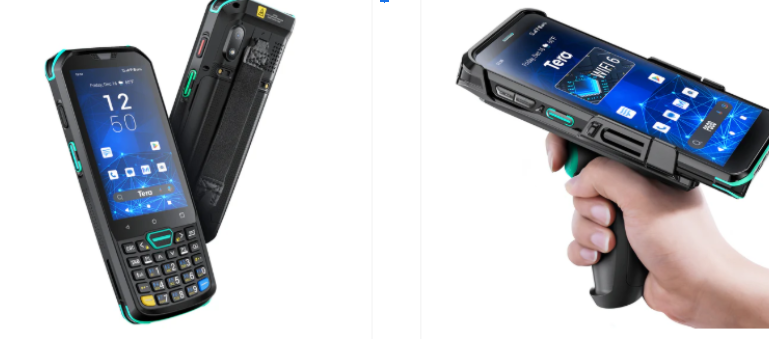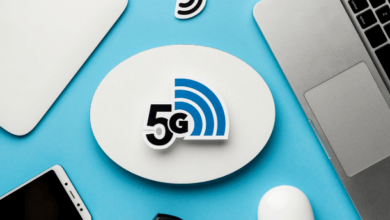The Evolution of Mobile Computers: A Historical Perspective

Introduction
In today’s interconnected world, mobile computing has become an integral part of daily life. Rapid advancements in technology have led to powerful smartphones and portable devices, revolutionizing communication, work, and access to information. Mobile computing refers to the ability to use these devices to perform tasks while being on the move, free from traditional wired connections.
The importance of mobile computing is evident in how it enables individuals to stay connected with family, friends, and colleagues through various means, including voice calls, text messages, social media, and instant messaging applications. It has also fundamentally changed how we access and consume information, enabling us to browse the internet, read news, watch videos, and participate in online courses with just a few taps on our smartphones.
Mobile computing has reshaped the business landscape, empowering professionals to remain productive even when away from their desks. With mobile apps and cloud-based services, employees can access work-related files, collaborate with team members, and respond to critical tasks in real-time. This flexibility has improved efficiency and enhanced productivity across industries.
Moreover, mobile computing has facilitated the growth of e-commerce, allowing consumers to shop online and make secure transactions through mobile payment systems, benefiting businesses by allowing them to reach their target audience and offer personalized experiences through mobile applications.
Early Mobile Devices: The Dawn of Portability
The journey of mobile computing began in the 1980s and 1990s with devices that, by today’s standards, seem bulky and limited in functionality. These devices, including handheld calculators, Personal Digital Assistants (PDAs), and early mobile phones, provided basic computing capabilities such as note-taking, calendars, and simple communication.
The Osborne 1: A Pioneer
Adam Osborne and his company are often credited with producing the first mobile computer in 1981. The Osborne 1, weighing 24 pounds, might not be considered mobile today, but it was an impressive invention at a time when computers were large, deskbound objects.
See also: Effective Budgeting and Bookkeeping Techniques in Bookkeeping Wantrigyo Price
Early Laptops and Tablets
Throughout the 1980s, other companies like Epson, Kyocera, and Commodore introduced variations of rudimentary laptops. The Gavilan SC in 1984 was the first device to call itself a “laptop” and to feature a touchscreen. In 1989, the GriDPad, the first mobile tablet device, was introduced. It featured a touchscreen and used a stylus that could utilize handwriting recognition software. The GriDPad inspired the design of the first PalmPilot.
Technological Advancements
Intel’s 1990 release of its 20MHz 386SL processor, specifically designed for mobile computing with its battery-saving sleep mode and power management features, significantly changed the mobile computing landscape. Technology began to catch up with the vision, prompting more companies to push the envelope with mobile computing, increasing competition and accelerating innovation. While Apple released the first PDA in 1993, IBM soon followed with what is considered the first true “smart” phone.
IBM’s Simon: The First Smartphone
IBM’s Simon, released in 1994, could perform the same functions as a PDA while also serving as a fax machine and mobile telephone. The Simon included 11 built-in programs, such as a to-do list, calendar, calculator, appointment scheduler, electronic sketch pad, world time clock, input screen keyboards, handwritten annotations, and address book.
Throughout the late 1990s, these devices started to streamline in design and addressed issues of battery life, screen clarity, memory, processor speed, and weight, while also becoming cheaper, selling for about $1,500. In 2000, Microsoft released its first “Pocket PC,” quickly followed by others like Casio, Compaq, and HP.
The Rise of Smartphones: A Turning Point
The late 1990s and early 2000s witnessed the introduction of smartphones, marking a significant turning point in the evolution of mobile computers. Devices such as the Nokia Communicator series and BlackBerry devices brought email, messaging, and basic internet browsing to handheld devices, integrating communication and productivity features.
Mobile Internet and App Stores
Faster mobile internet technologies, such as 3G and later 4G, allowed a more immersive browsing experience on smartphones. The introduction of app stores, notably Apple’s App Store in 2008, revolutionized mobile computing by providing a platform for developers to create and distribute a wide range of applications.
The cost of owning a mobile phone and paying for calls dropped dramatically as more networks entered the market, affordable pay-as-you-go contracts became available, and the phones became more competitively priced. By the end of the 1990s, teenagers were adopting them as enthusiastically as they had previously embraced other portable devices, like personal stereos, and greeted the first phones with cameras with delight. Now they could not only take a picture, but also send it to their friends attached to a text message. Phones that could store and play music were a successful next step.
Expansion of Mobile Applications
The proliferation of mobile apps across various categories expanded the capabilities of smartphones. Users could access social media, play games, stream media, navigate with GPS, and perform countless other tasks through dedicated mobile applications. The app ecosystem is continuously growing, providing solutions and entertainment that cater to virtually every need and interest.
For some time, the business community adopted products such as the Psion Organiser or Palm Pilot (collectively known as PDAs, or Personal Digital Assistants). These provided, in one pocket-sized package, calendars, calculators, spreadsheets, notepads, and other business applications. More advanced devices could connect to the internet and sync with their owners’ desktop machines. Owning a PDA marked you out as a busy person who needed constant access to information.
It took two separate technological advances to bring about the convergence of mobile phones and PDAs: the development of the ARM microprocessor, and the 3G mobile network.
Modern Smartphones: Multifunctionality and Connectivity
Today’s smartphones have become essential to daily activities, transforming how people communicate, work, and live. These devices have evolved into mini-computers, combining numerous functions once the domain of separate gadgets.
The Role of Technology Advancements
The leap from basic technology happened quickly as technology advanced at an unprecedented pace. By the late 1990s and early 2000s, advancements in microprocessors, increased battery efficiency, and innovative software languages pushed the boundaries of what mobile devices could achieve. Manufacturers began incorporating additional features such as cameras, more intricate displays, and responsive operating systems.
Key Features
- Cameras: From basic VGA cameras to sophisticated multi-lens systems, smartphones now rival professional camera gear, making photography accessible to everyone.
- GPS: Many people rely on their smartphone’s GPS for everything from navigation to tracking their fitness runs.
- Music Players: The days of carrying a separate MP3 player are history. Libraries, stored in a cloud or on the device itself, are just a tap away.
- Internet Browsing: Accessing the internet at lightning speeds with the tap of a finger has become second nature, thanks to faster cellular networks and Wi-Fi connections.
Operating Systems
Mobile operating systems were a game changer. Symbian, BlackBerry OS, and eventually iOS and Android, gave birth to an entirely new world of apps and functionalities for both developers and users.
Touchscreens
If there’s one specific feature that defined the smartphone era and set it apart from its predecessors, it was the touchscreen. The late 2000s were a period of radical transformation as touchscreens began to replace the physical keys and buttons that dominated older models. Using fingers to navigate the phone became intuitive and applications could be more dynamic and interactive, offering engaging experiences beyond the functionality of basic mobile phones. Touchscreens offered elegant designs and interface innovation.
Connectivity
One of the defining aspects of transitioning to smartphones was the incorporation of internet connectivity. Mobile broadband networks like 3G, followed by 4G, and now 5G in many places, systems ensure speedy and robust internet connections. The combination of mobile internet and smart devices revolutionized how society functions. Social media apps flourished, allowing people to remain connected and share moments. Information access became more readily available, shopping went online, and streaming services and gaming apps enabled users to enjoy movies, music, and games without needing other dedicated devices.
Mobile Computing in the Enterprise
Over 15 years, mobile computing and telephony technology continued to evolve. The retail industry was one of the first to adopt mobile computers to improve business workflows and communications for its associates to automate grocery stores ordering and inventory processes. As the devices gained functionality and new workflows were developed, the use case for business expanded to include distribution, manufacturing, transportation, and healthcare. This new functionality included faster processors, improved ruggedization, and the development of wireless networks to improve user productivity, technologies that would then make their way into consumer products.
In the mobile computing world, there were initial thoughts that consumer smartphones and “Bring Your Own Device” (BYOD) policies in the workplace could be all-in-one solutions. However, the consumer smartphone lacked many business-specific requirements, such as ruggedization, barcode scanning, and separately chargeable batteries to cover the power requirements of extended use cases. Also, corporate security concerns and the requirement to support multiple operating systems limited consumer smartphones’ practicality for many IT organizations.
The Enterprise Smartphone
Mobile computing manufacturers responded by taking the best features and technologies from smartphones and incorporated essential business features. The enterprise smartphone is much more than its mobile computer predecessor, a tool for task workers, while still acknowledging that it is so much more than a phone. Like the smartphone became the center of each consumer’s world, the enterprise smartphone has the same ability to become the mobile workers’ single tool to accomplish the many activities they perform during each day.
Examples of functionality include:
- Timekeeping
- Internal communications (voice, text, UCaaS)
- External communications (customers, vendors)
- Video training
- Personal safety monitoring
- Facility safety alerting
- Task management
- Business-specific workflows that are unique for each market
Retail Examples:
- Curb Side Pickup
- Cycle Counts
- Shelf Price Audit
- Mark Downs
- Product Ordering
- Product Transfers
- Shelf Price Audit
Healthcare Examples:
- Electronic Health Record integration
- Patient/Bed Alarms and Alerts
- Real-time coordination of care amongst entire care teams
- Medicine and patient barcode scanning
- RTLS for hospital assets
- Wound assessments
- Telehealth
5G and Beyond
The introduction of 5G networks promises to further revolutionize mobile computing, with faster speeds, lower latency, and increased capacity. 5G will enable more immersive experiences, support real-time applications, and accelerate the adoption of emerging technologies like augmented reality (AR) and virtual reality (VR).
Network Evolution (1G to 5G)
- 1G: In the 1980s, 1G utilized analogue technology and was primarily designed for voice calls. These networks had limited capacity, poor call quality, and a complete lack of security.
- 2G: The 1990s witnessed the first step in mobile telecommunications as networks adopted digital signal transmission methods that made transmission much more efficient. A new feature was the introduction of text messages (SMS).
- 3G: The third generation of mobile communication brought faster data speeds, enabling users to browse the web, send emails, and access basic multimedia content on their phones. In the early days of 3G, video calling between mobile devices became available and was expected to be a significant driver.
- 4G: Marked a substantial leap forward as 4G increased data speeds and reduced latency, making real-time video streaming, online gaming, and high-quality video calls a reality.
- 5G: This generation offers greater rates of data transfer, lower latency, and improved reliability than previous generations, enabling new use cases and transforming a wide range of industries.
The Future of Mobile Computing
As technology continues to advance, mobile computing will play an increasingly pivotal role in shaping the digital landscape. We can expect further innovation in areas such as wearable technology, augmented and virtual reality, and the Internet of Things, all powered by mobile computing. In the mobile computing industry, choosing the right solutions for your particular needs is crucial. If you’re looking for innovative mobile computing solutions, consider visiting tera mobile computer.
Conclusion
From smartphones to tablets, wearable devices, and a vast array of mobile applications, mobile computing has transformed how people work, communicate, and access information. Industries ranging from business and healthcare to e-commerce and education have harnessed the power of mobile computing to enhance productivity, improve customer experiences, and increase accessibility.
As technology evolves, mobile computing will advance further, offering new possibilities and reshaping the way people interact with technology. With its transformative impact and wide-ranging applications, mobile computing has revolutionized how people live, work, and connect in an increasingly interconnected world.





